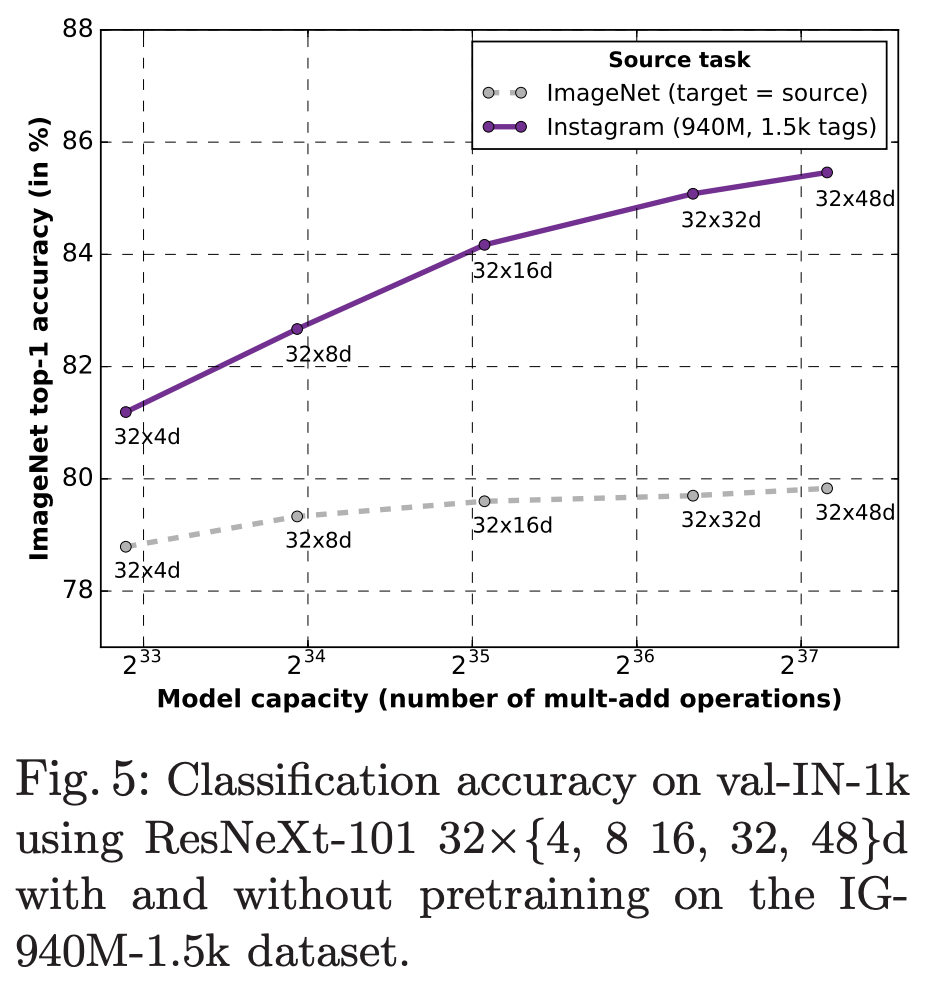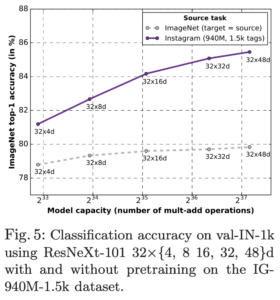ResNext WSL

import torch
model = torch.hub.load('facebookresearch/WSL-Images', 'resnext101_32x8d_wsl')
# or
# model = torch.hub.load('facebookresearch/WSL-Images', 'resnext101_32x16d_wsl')
# or
# model = torch.hub.load('facebookresearch/WSL-Images', 'resnext101_32x32d_wsl')
# or
#model = torch.hub.load('facebookresearch/WSL-Images', 'resnext101_32x48d_wsl')
model.eval()
All pre-trained models expect input images normalized in the same way, i.e. mini-batches of 3-channel RGB images of shape (3 x H x W), where H and W are expected to be at least 224. The images have to be loaded in to a range of [0, 1] and then normalized using mean = [0.485, 0.456, 0.406] and std = [0.229, 0.224, 0.225].
Here’s a sample execution.
# Download an example image from the pytorch website
import urllib
url, filename = ("https://github.com/pytorch/hub/raw/master/images/dog.jpg", "dog.jpg")
try: urllib.URLopener().retrieve(url, filename)
except: urllib.request.urlretrieve(url, filename)
# sample execution (requires torchvision)
from PIL import Image
from torchvision import transforms
input_image = Image.open(filename)
preprocess = transforms.Compose([
transforms.Resize(256),
transforms.CenterCrop(224),
transforms.ToTensor(),
transforms.Normalize(mean=[0.485, 0.456, 0.406], std=[0.229, 0.224, 0.225]),
])
input_tensor = preprocess(input_image)
input_batch = input_tensor.unsqueeze(0) # create a mini-batch as expected by the model
# move the input and model to GPU for speed if available
if torch.cuda.is_available():
input_batch = input_batch.to('cuda')
model.to('cuda')
with torch.no_grad():
output = model(input_batch)
# Tensor of shape 1000, with confidence scores over ImageNet's 1000 classes
print(output[0])
# The output has unnormalized scores. To get probabilities, you can run a softmax on it.
print(torch.nn.functional.softmax(output[0], dim=0))
Model Description
The provided ResNeXt models are pre-trained in weakly-supervised fashion on 940 million public images with 1.5K hashtags matching with 1000 ImageNet1K synsets, followed by fine-tuning on ImageNet1K dataset. Please refer to “Exploring the Limits of Weakly Supervised Pretraining” (https://arxiv.org/abs/1805.00932) presented at ECCV 2018 for the details of model training.
We are providing 4 models with different capacities.
| Model | #Parameters | FLOPS | Top-1 Acc. | Top-5 Acc. |
|---|---|---|---|---|
| ResNeXt-101 32x8d | 88M | 16B | 82.2 | 96.4 |
| ResNeXt-101 32x16d | 193M | 36B | 84.2 | 97.2 |
| ResNeXt-101 32x32d | 466M | 87B | 85.1 | 97.5 |
| ResNeXt-101 32x48d | 829M | 153B | 85.4 | 97.6 |
Our models significantly improve the training accuracy on ImageNet compared to training from scratch. We achieve state-of-the-art accuracy of 85.4% on ImageNet with our ResNext-101 32x48d model.
References
